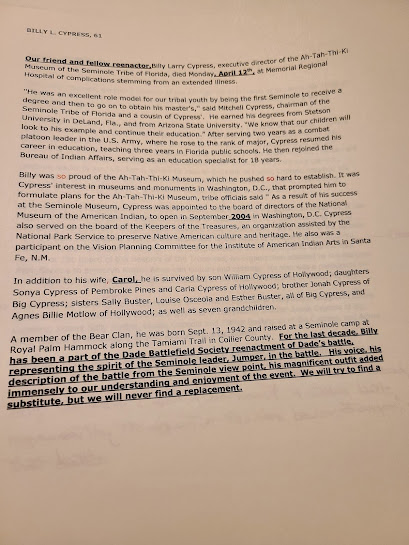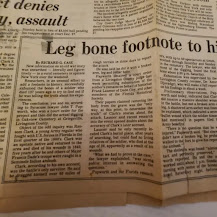Lisa and I successfully finished our showcase! We both collaborated to create the presentation, using Canva to make a super fun design that was reflective of our work with file folders, ripped papers, and paperclips.
We made sure to include information about the site, Frank Laumer's background as a lay historian, our project, and what were able to accomplish.
Our internship director, Patrick Swan, watched in and sent us encouraging messages to let us know he was happy with the results. He also welcomed us to continue future research on the Ransom Clark exhumation - something Lisa and I are very heavily considering doing. We both loved reading about the exhumation, seeing the photos, the praise, and the backlash - if we could make something out of this, or even publish a paper about these findings, it would be an excellent, fulfilling way to wrap up this work.
Working with Lisa has been a wonderful aspect of this internship as well; last semester was my first time ever on UCF campus, as I had done all of my undergrad work online. I did not get the chance to make personal connections with my fellow students, and it proved difficult for me to get help, bounce ideas, or relate with classmates simply because I never got to meet them. With our partnership, Lisa and I were able to successfully collaborate and muse over the difficulties of not only the internship, but of school, work, and life in general. This has made me even more comfortable and excited about working towards my master's - I eagerly look forward to cultivating more relationships like this with my classmates in the future!
I learned:
- basic archival concepts/cataloging techniques
- that personal connections are extremely important and beneficial, as seen by our teamwork and Laumer's own work with other historians and friends.
- all ideas are good ideas, even if it feels like you are wasting time. It is important to try, even if you feel underqualified to handle the task at hand
- having a specific goal from the beginning will save hardship in the future
- historical research has changed drastically, but the purpose is still the same: finding that little bit of truth, no matter how little, builds the strongest historical narrative possible
Now I will commence working on my methodological paper. If I had to wrap up my thoughts and feelings about the internship in one single quote, it would be this:
"Every accomplishment starts with the decision to try."
- Scooby Doo
(.... Just kidding, John F. Kennedy!)






























.png)

